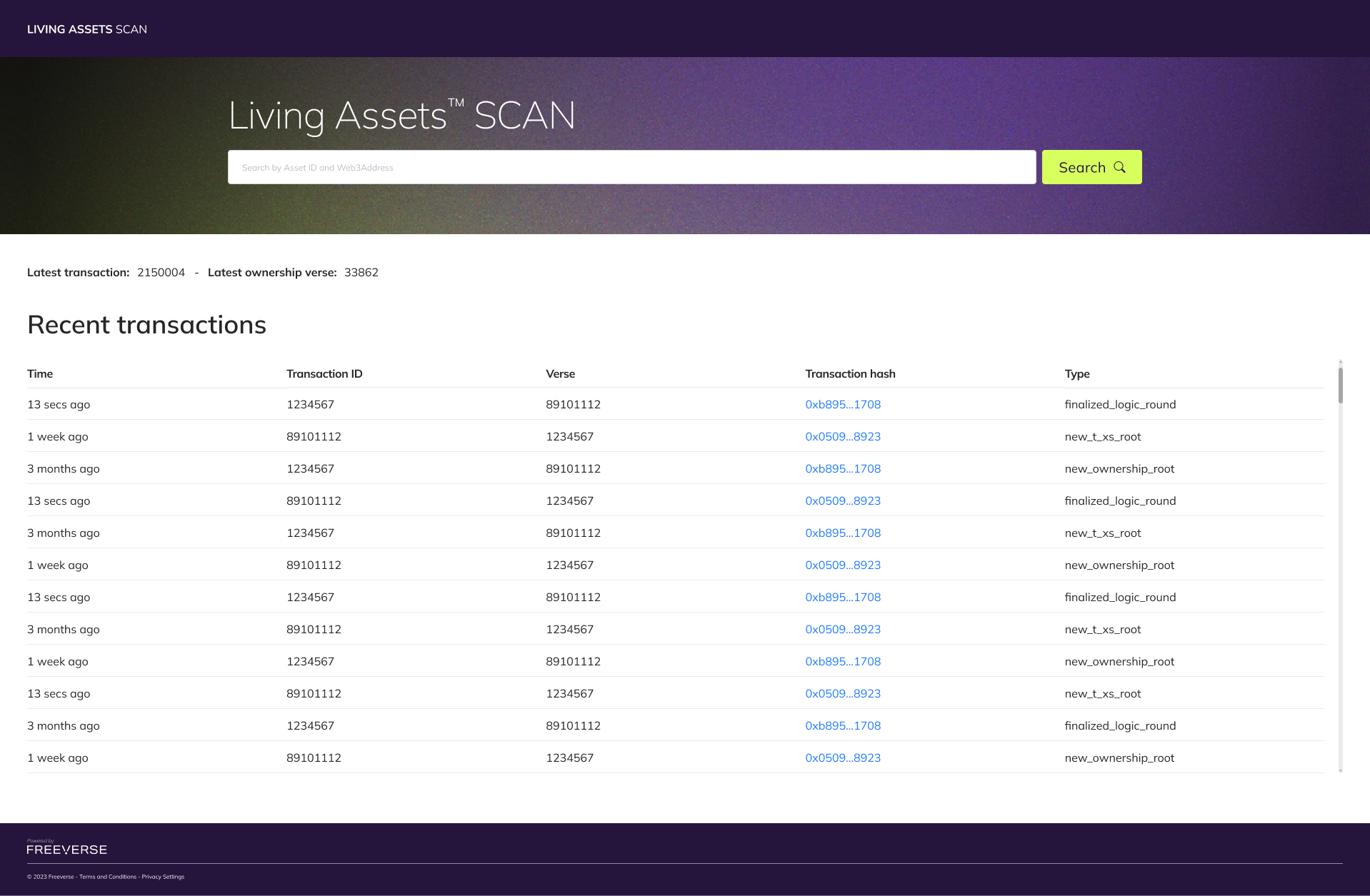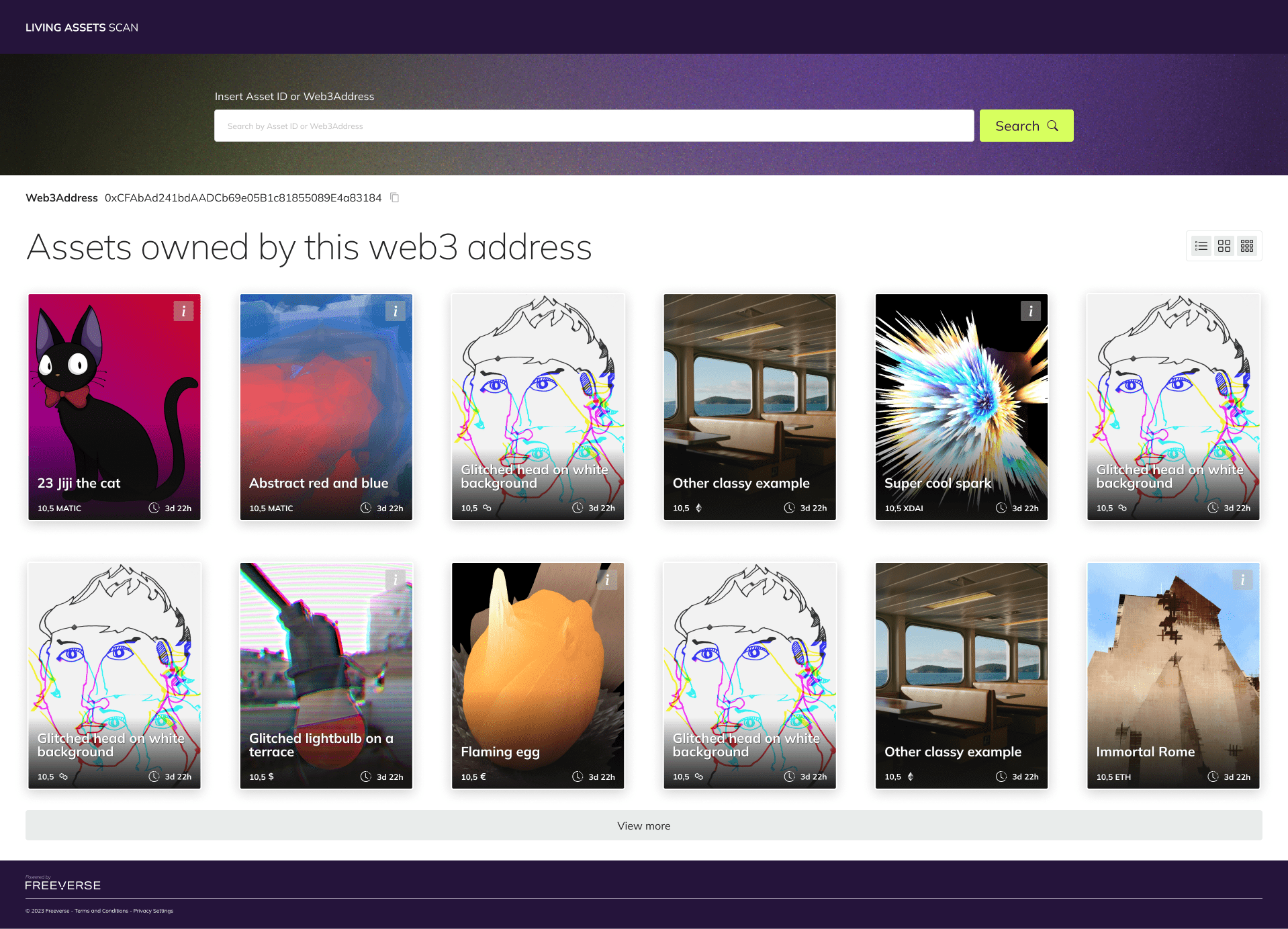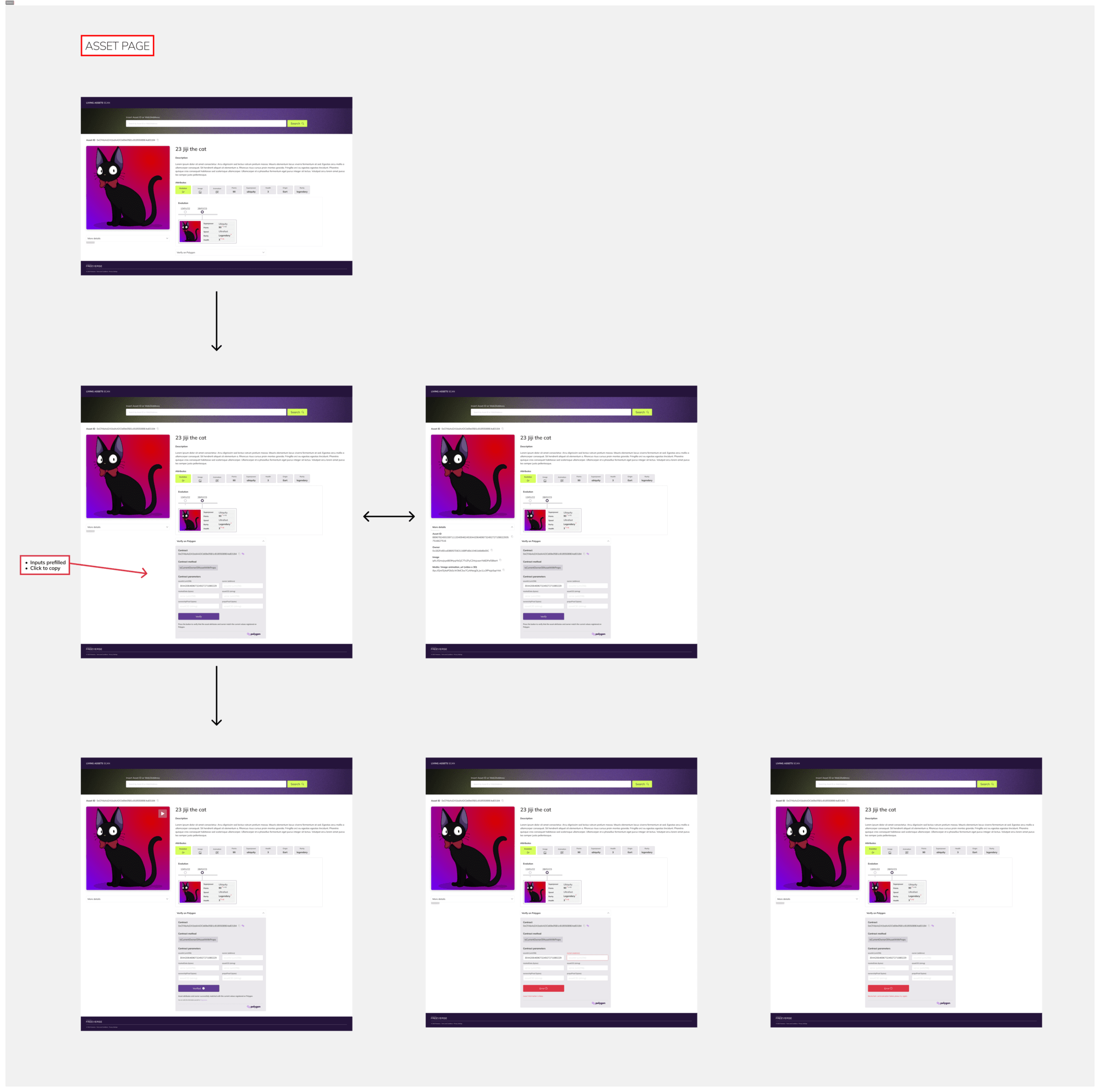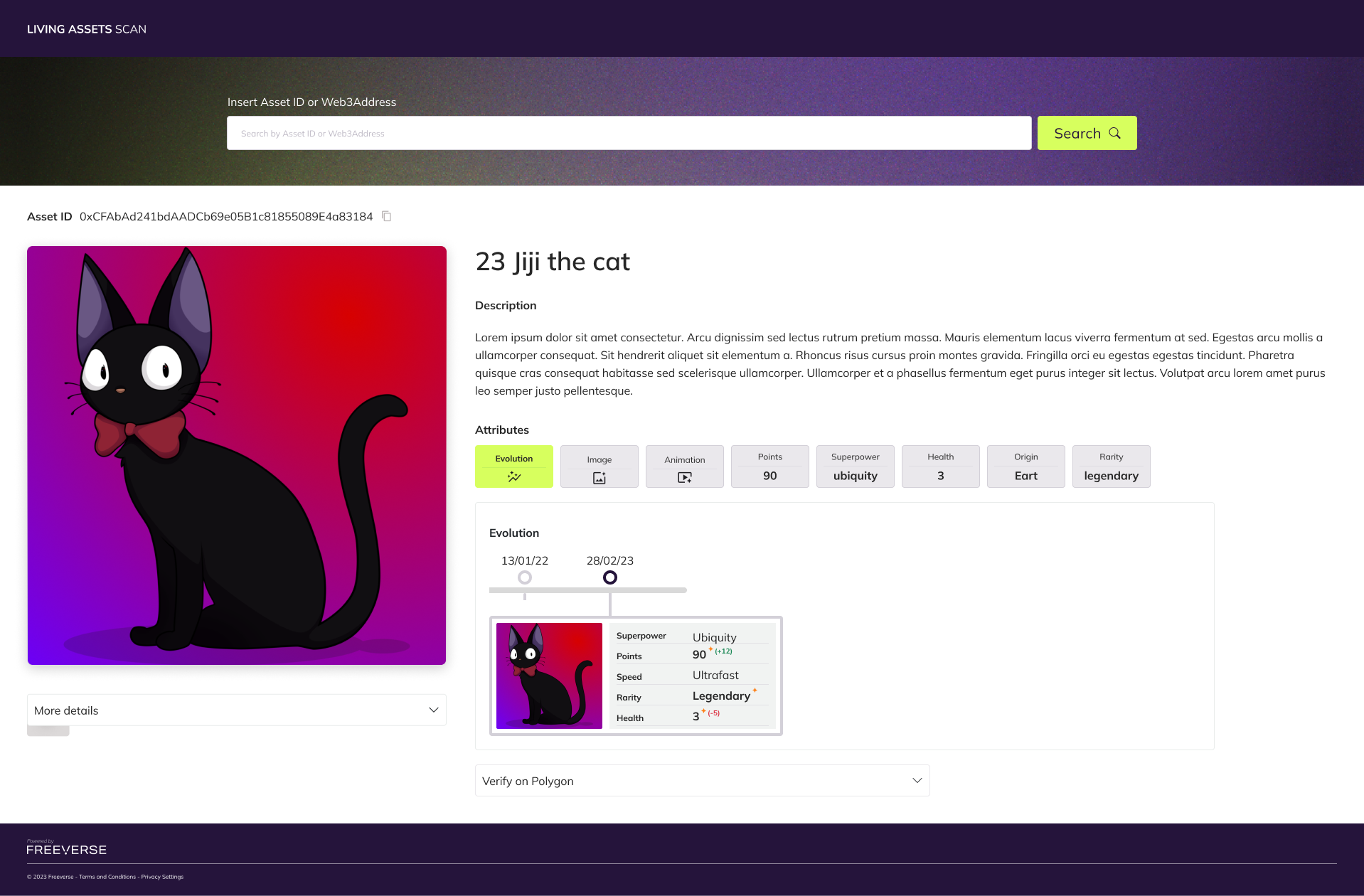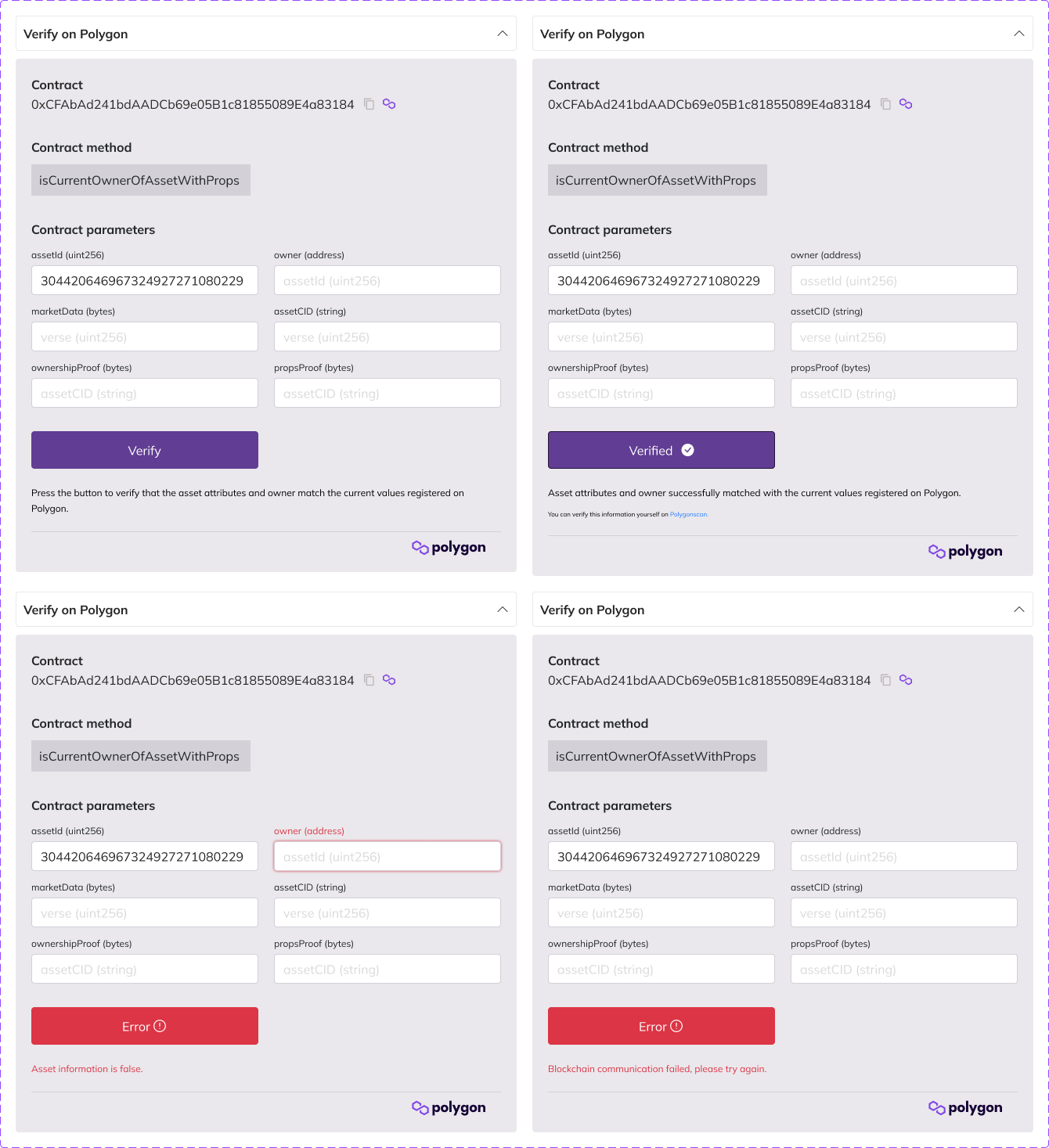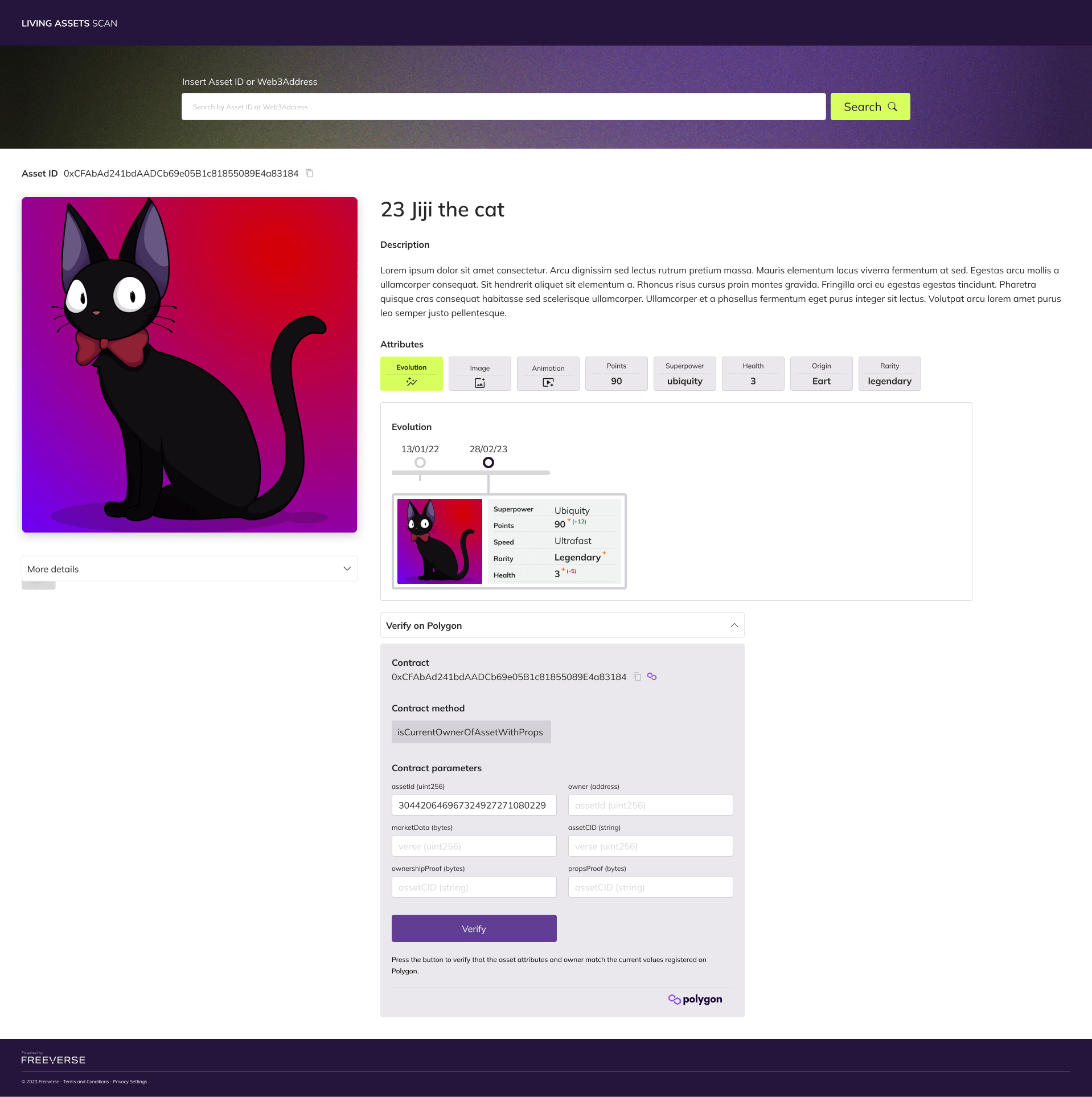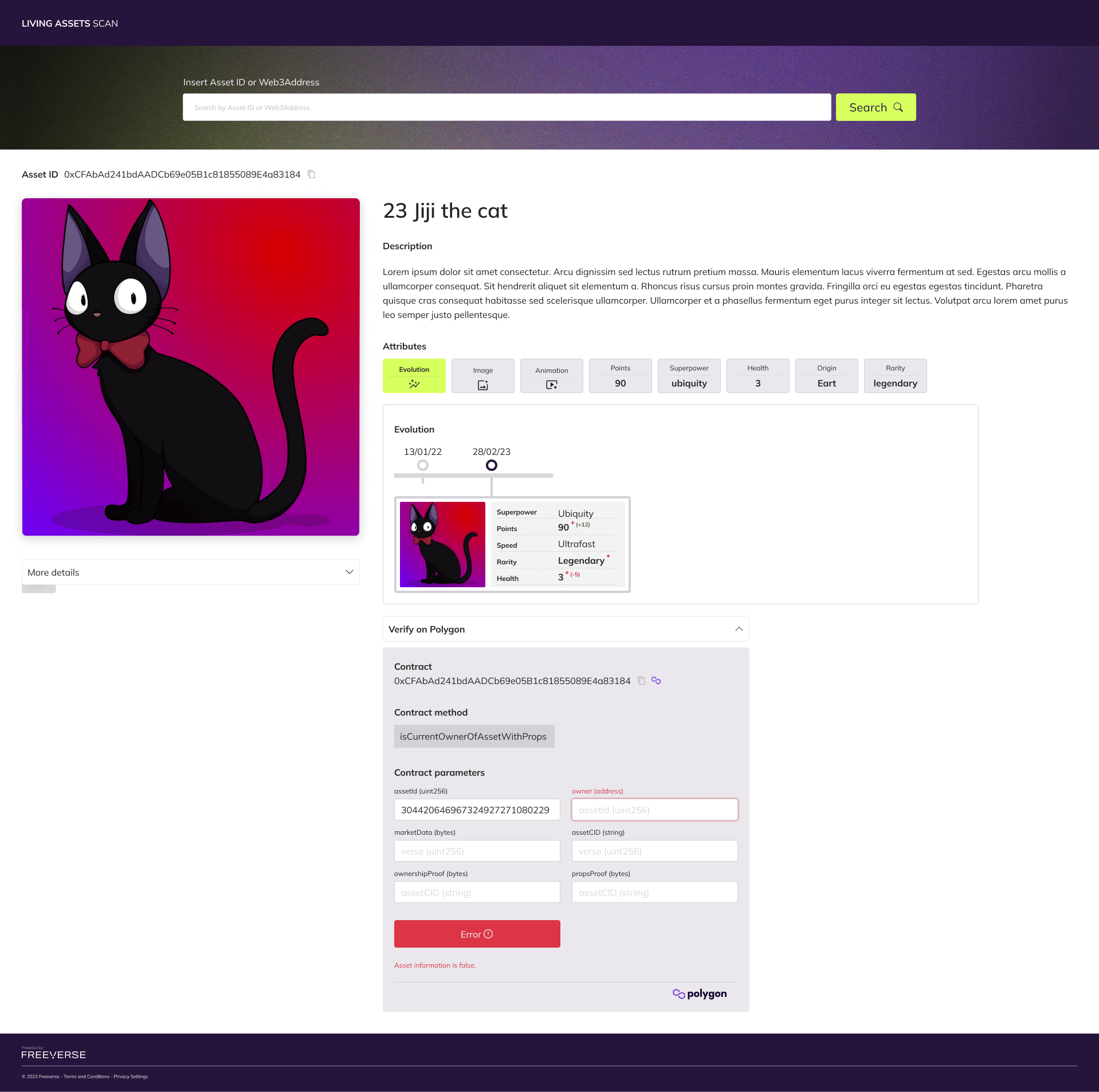Living Assets™ NFT Scan Dashboard
The goal was to design a user-friendly and intuitive NFT scan dashboard for tracking and exploring the evolution of a unique type of NFT called "Living Assets."
These NFTs are dynamic and evolve over time, making it essential to provide users with a comprehensive tool to monitor changes, transactions, and verify the authenticity of these assets.
The dashboard needed to include features such as a search bar, NFT image display, image properties/qualities, an evolution timeline, transaction data visualisation, and a verification tool connected to Polygonscan.
Stages:
1. Research and Discovery
We conducted user interviews and surveys to gather insights into the needs and expectations of NFT enthusiasts and collectors, identified pain points and challenges faced when tracking evolving NFTs. I also researched existing NFT marketplaces and dashboards to gather design inspiration and understand best practices.
2. Information Architecture (User flows)
We defined the dashboard's structure to ensure easy navigation and access to relevant information. Planned the layout to accommodate the search bar, NFT image display, image properties, evolution timeline, transaction data, and verification tool.
3. Wireframing
I created low-fidelity wireframes to visualise the dashboard's layout and functionality. Iterate through various design options, ensuring a clean and organised presentation of information.
4. Key Features
Search Bar
Place a prominently positioned search bar at the top for users to enter NFT IDs or keywords.
NFT Image
Display the selected Living Asset NFT image prominently below the search bar. Include a zoom-in feature for users to explore intricate details.
NFT Image Properties/Qualities
Provide a section adjacent to the NFT image that lists key properties and qualities of the NFT, such as rarity, edition, and artist information.
Evolution Timeline
Design a timeline that showcases the evolution stages of the Living Asset NFT. Users can click on each stage to see how the asset has changed over time.
Transactions Visualisation
Incorporate dynamic diagrams and tables to represent recent and daily transactions. This could include transaction volume, price trends, and trading frequency.
Verification Tool
Integrate a verification box connected to Polygonscan to allow users to validate the authenticity of the NFT and its transaction history.
5. Prototyping
I then developed interactive high-fidelity prototypes using mainly Figma. I tested the prototypes with potential users to gather feedback on usability, navigation, and overall user experience.
6. Testing and Iteration
We conducted usability testing sessions with target users to identify pain points and areas for improvement. Iterate on the design based on user feedback to refine the dashboard's functionality and aesthetics.
7. Final Product
After several rounds of testing and refinement, finalise the design. Collaborate with developers to ensure the implementation aligns with the design specifications.
8. Conclusion
The Living Assets NFT scan dashboard provides NFT collectors/traders with an intuitive tool to track, explore, and verify the evolution of their NFTs. By prioritising user needs and integrating essential features, the dashboard now offers a seamless and engaging experience for users in the dynamic world of NFTs.
